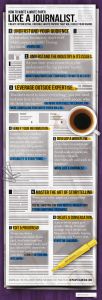
 The idea of a blog is outdated for many people. If you want to be a journalist however, maintaining a blog is a key element.
The idea of a blog is outdated for many people. If you want to be a journalist however, maintaining a blog is a key element.
” The news cycle is now interactive. Journalists use microblogging to publish, share and find information, links, photos, videos and polls with large audiences from anywhere,” says Ellyn Angelotti, digital trends and social media faculty member at The Poynter Institute (p.45).
A good blog will take the life of its readers. Its up to you to facilitate the vision and start the conversation. The beauty in the idea of a blog comes into play when the readers take control of the content. The readers will be happy with the content and you will be happy with the traffic.
In this arena of journalism open-sourcing and crowd-sourcing are frequently used. Mark Briggs author of Journalism Next Third Edition states that, “Online, all relevant information is an essential part of the virtual-community conversation on a given topic.”
Keep in mind journalist who are currently in the field are creating content for their respective news agencies and working on multiple stories at a time with tight deadlines. Freelance reporters are investigating a variety of stories at any given time or possibly seeking employment. They do all this on top of producing content for their own personal blogs.
Running a successful blog requires you to be constantly on guard for the next story, as John Cook, former business reporter for the Seattle Post-Intelligencer puts it.
I mention this not to scare anyone away from a career in journalism but to warn you it will take perseverance and dedication.
